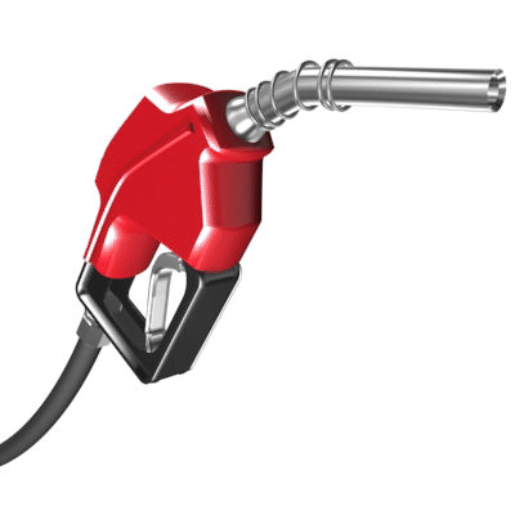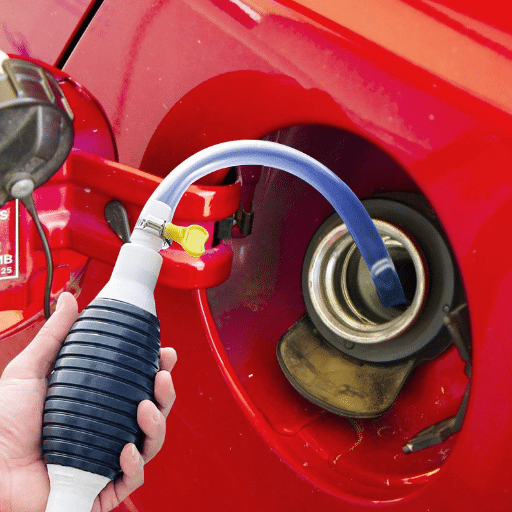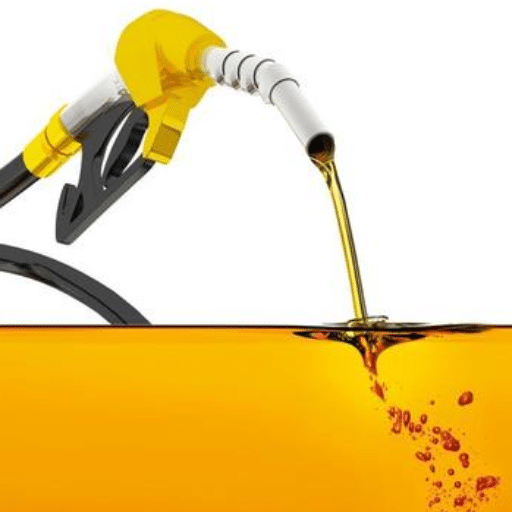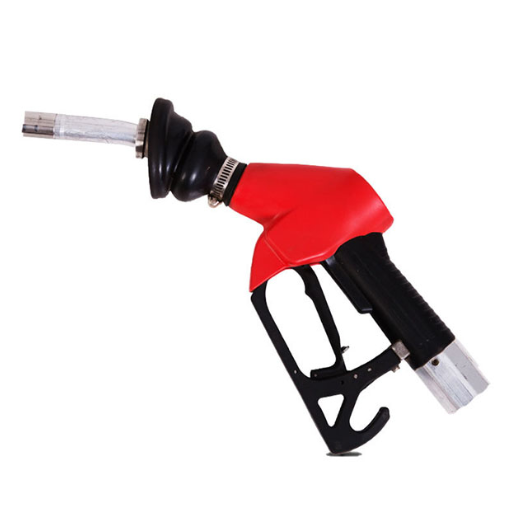Carbide teeth are a must when it comes to foundation drilling, where precision, durability, and speed are of the essence. These state-of-the-art tools can resist penetration through hard substrates with hits from rock, clay, hard compacted soil, or anything else perfect setting to delivering under extreme conditions. This paper tries to understand the science and engineering behind carbide bullet teeth in terms of composition, application, and the advantages of foundation drilling. Any contractor, engineer, or equipment specialist must comprehend how these essential tools work to be better suited for foundation projects and strive for improved outcomes. All about carbide bullet teeth are listed below so that one can understand them and their important role in modern drilling technology.
Introduction to Bullet Teeth
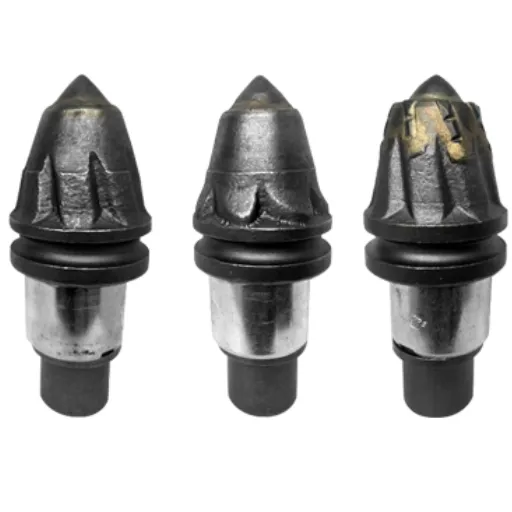
Hence, carbide bullet teeth are advanced cutters designed for heavy drilling, which includes foundation drilling, trenching, and mining. These tools have a tungsten carbide tip that is highly regarded for its extraordinary hardness and wear resistance, counters that enable them to resist the fiercest conditions with durability and working life. They prepare the teeth to cut through soils, rocks, and other tough materials, enhancing drilling efficiency while reducing equipment wear. Their refined design ensures the definite removal of materials with minimal vibration from the tools, thus providing smooth functioning.
What are Bullet Teeth?
Bullet- or conical-type teeth or rotary cutter picks are special tools used in the mining, trenching, tunneling, and road-milling work. These tools have to withstand and demolish various materials such as rock, asphalt, and hard soils. The cutter points are often made of tungsten carbide and serve to resist abrasion and heat whilst continually subjected to heavy-duty use. The points are brazed onto a steel body, which may further be covered with wear-resistant coatings for high durability and performance.
Performance Advantage: Study results show that any tungsten carbide can increase the lifespan of cutting tools by up to 200% when compared with conventional steel tools for the same application.
Bullet teeth’ geometry is crucial to efficiency. The conical shape ensures cutting attention and intentions of people from being dragged away, while energy transfer is of paramount concern from the machine to the material being excavated. Further, modern bullet teeth are engineered to turn during operation, such that the tool surface wears evenly, extending the service life and preserving the cutting efficiency.
The bullet teeth are fitted in several equipment, such as rotary drum cutters and trenchers, mounted in holders on rotatable drums or chains. The tools are shaped to stringent standards, with hardness values commonly far exceeding 1400 HV (Vickers Hardness), ensuring their robustness under the most adverse conditions. Such technical developments in bullet tooth design and materials enhance excavation efficiency and minimize operational downtime.
Applications of Bullet Teeth in Construction
Bullet teeth are quite useful in different construction activities as they can effortlessly cut through various kinds of materials, such as soil, rock, asphalt, and concrete. One major application of bullet teeth lies in trenching, whereby they assist trenchers to have a better cutting action and exact trenching depths. Depending on the machine and application requirements, modern trenching implements with first-grade bullet teeth can cut down from about 2 to 20 feet deep.
Key Application Areas
- Trenching: Better cutting action and exact trenching depths from 2 to 20 feet deep
- Tunneling: Durability and cutting designs essential for high-pressure environments
- Surface Mining: Dragline and continuous miner operations with high wear resistance
- Road Construction: Milling machines remove damaged asphalt layers with precision
- Forestry Operations: Mulching and land clearing with continuous operation capability
Tunneling projects are yet another arena in which bullet teeth find extensive use, where durability and cutting designs are essential to withstand sufficiently high pressures. Because of their penetration of hard strata-like basalt or granite-they suffer minimal wear, thereby allowing prolonged efficient working of tunnelling machines. Bullet teeth also assist surface mining activities, especially dragline and continuous miner operations. Their wear resistance is high enough to decrease tool replacement frequency and thus pose high maintenance costs.
Performance Metric: Carbide-tipped bullet teeth can process 300 square yards of asphalt in an hour, depending on the hardness of the material and the equipment in use.
Another important area is in road building and rehabilitation. Milling machines fitted with bullet teeth remove the damaged layers of asphalt with needle-like precision so it can be repaved. It has been observed that, depending on the hardness of the material and the equipment in use, carbide-tipped bullet teeth can process 300 square yards of asphalt in an hour. Given these rates, it only makes sense that applying top-quality, wear-resistant bullet teeth would give you more time to work on other aspects of your project and make better use of resources.
Last but not least, they serve great in forestry mulching and land clearing: bullet teeth assist in shredding vegetation and grinding stumps into mulch. Their sturdy construction allows continuous or uninterrupted operation in abrasive conditions. Hence, this further illustrates the versatility of bullet teeth in multiple construction sectors. Bullet teeth continue to play a vital role in evolving construction efficiency, while ensuring sustainability in operations, and simultaneously keeping up with the times.
Importance of Quality in Bullet Teeth
Pressure exerted by bullet teeth varies; consequently, a high finish is required to achieve good performance, longer service life, and cost-effectiveness. Conveying the essence of manufacturing is high precision, for these teeth are subjected to pressure of large magnitude, impact, and abrasion over extended periods. Advanced materials, such as tungsten carbide, are thus applied to manufacture these tips, offering the highest possible hardness and maximized wear resistance compared to steel alloys. Several studies testify to the fact that tungsten carbide-tipped bullet teeth have twice the life in harsh environments and thus require many replacements and eventual downtime.
Similarly, quality bullet teeth enhance fuel efficiency by effectively improving the cutting and grinding process. For instance, good teeth are sharp for a longer period of time, meaning energy is efficiently transferred with reduced effort required from the machinery. Lower-quality components, conversely, can cause uneven wear, increased vibrations, and motor or drivetrain damage—resulting in higher maintenance expenditures.
Premium bullet teeth also guarantee a more even and consistent cutting action through all conditions, be it forestry, construction, or road milling. By increasing productivity with fewer operational stoppages, high-end designs demand attention in terms of project schedules and cost management and are thus worthwhile assets to modern industrial practices.
Types of Bullet Teeth
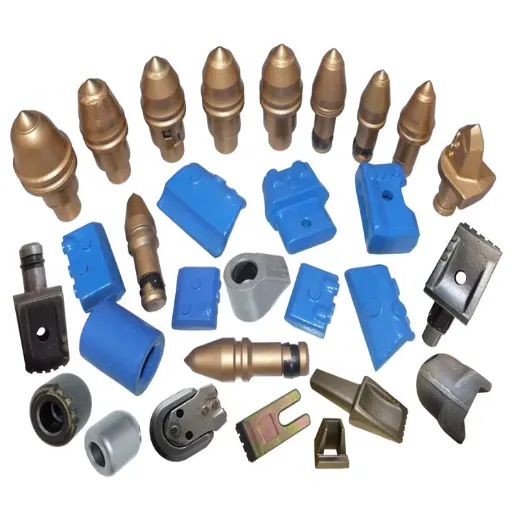
The bullet-type teeth are designed to suit specific operational requirements and may generally be divided into the following categories:
Standard Bullet Teeth
These teeth would be the choice in less abrasive materials. They give cutting action that can be relied on and are general-purpose teeth.
Carbide-Tipped Bullet Teeth
Have a cemented carbide tip and are for cutting hard and abrasive materials such as asphalt or reinforced concrete. For wear resistance, it is treated as the hardest material.
Rotation Bullet Teeth
Resistant to wear, such teeth rotate during working operations to promote uniform wear. They are employed in highly aggressive operations such as road milling or mining.
Custom Bullet Teeth
Designed for specialized tasks, custom-made teeth are built around operations requiring special performance for niche applications.
In selecting the appropriate type, the material, application, and desired durability dictate the choice, thereby rendering it essential to first analyze operational demands.
Carbide Bullet Teeth vs. Tungsten Carbide
Usually compared because they are important in heavy-duty applications, carbide bullet teeth and tungsten carbide discharge separate functions and have different characteristics. Carbide bullet teeth refer to tools engineered for high-impact force during drilling, road milling, or excavation. They usually consist of tungsten carbide tips-main wear-resistant components-brazed to a steel body. Tungsten carbide, however, is a hard and wear-resistant, corrosion, and heat-resistant composite material from tungsten and carbon.
| Aspect | Carbide Bullet Teeth | Tungsten Carbide |
|---|---|---|
| Definition | Complete tools with tungsten carbide tips | Raw composite material |
| Application | Direct use in drilling and excavation | Base material for manufacturing tools |
| Composition | Tungsten carbide tip + steel body | Tungsten + carbon composite |
| Function | Ready-to-use cutting tools | Material for creating durable components |
Application and material makeup constitute the major difference between the two. As such, tungsten carbide stands as a raw material used in the manufacture of high-grade tools for cutting and drilling, including carbide bullet teeth. It is the tungsten carbide tips that impart durability to the carbide bullet teeth, thereby extending their service life in the cutting through of hard materials. The choice between the two is dependent on the use. While tungsten carbide is preferred as a base material capable of being made into very tough tool components, carbide bullet teeth are tools used in particular jobs straightaway.
Auger Bullet Teeth and Their Advantages
Auger bullet teeth are essential heavy drilling and excavation tools. These teeth are tipped with tungsten carbide, rendering them impervious to wear and suitable for cutting through highly abrasive materials like rocks, frozen ground, and matured soil. The main advantage that using the carbide tips is that final touching down wear and tear is minimized, enhancing durability and more precise functioning with increased service time for the equipment with lower maintenance downtimes.
Key Advantages
- High efficiency in operation by retaining sharp cutting edges over intense use
- Reliable performance in demanding situations
- Tight fit inside auger heads reducing vibrations during work
- Maximum stability during drilling operations
- Suitable for construction, mining, and farming applications
Another consideration for auger bullet teeth is that they guarantee high efficiency in operation by retaining sharp cutting edges over intense use, ensuring reliable performance in demanding situations. They have been designed to fit tightly inside the auger heads, thus reducing vibrations while working, hence allowing for maximum stability during the drilling operation. This makes them extremely employed in construction, mining, and farming, where the object must be carried out with precision and great durability. While choosing auger bullet teeth, one must consider the nature of the grounds, compatibility with the equipment, and final design to enhance both performance and longevity.
Rock Bullet Teeth for Heavy-Duty Applications
The rock-bullet types of teeth are for challenging drilling tasks in harder abrasive environments like rocky terrains and compacted soils. They are designed with tungsten carbide tips of the highest grade, coupled with heat-treated steel bodies for great wear resistance and cutting efficiency. The teeth are designed to fit heavy-duty auger equipment, which is well stabilized and efficient under the harshest working conditions.
Selection Considerations
- Ground Conditions: The harder the terrain, the teeth must have carbide layers reinforced to withstand higher impact and abrasion
- Machine Compatibility: Check compatibility with your machine to prevent operational efficiency loss
- Tip Geometry: Sharper conical tips provide better penetration effect, while flat designs are favored for durability on abrasive surfaces
- Maintenance: Regular inspection and replacement when necessary for optimal drilling performance
Choosing rock bullet tips must take into consideration a few essential points to ensure proper working conditions. First, consider the ground conditions-the harder the terrain, the teeth must have carbide layers reinforced to withstand higher impact and abrasion. Then, be sure to check the compatibility of your machine with the teeth in order to prevent the machine from losing its operational efficiency. Next, depending on tip geometry, sharper conical tips will give a better penetration effect, whereas flat designs are favored for durability on abrasive surfaces. Maintaining the equipment through regular inspection and replacement whenever necessary will be beneficial in ensuring drilling performance and property service life.
Components of Bullet Teeth
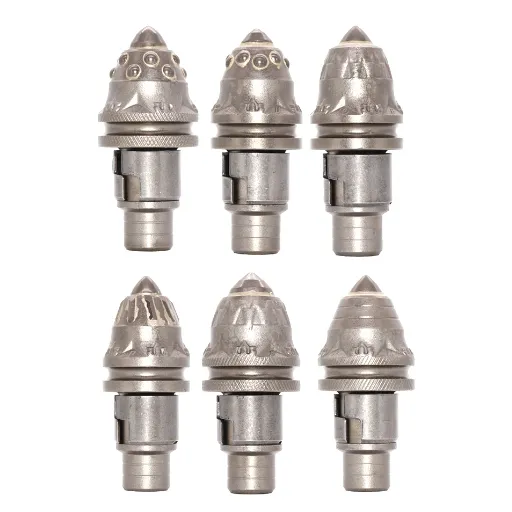
The tooth of a bullet is made of three main elements:
- The tip – Usually tungsten carbide, hardness and wear resistance make the tip able to withstand extreme impact forces during cutting operations.
- Body – Made of high-strength steel for durability and support to the tip during use.
- Retaining System – Includes collars or clips that keep the tooth secure and aligned during operation.
In demanding applications of drilling and cutting, these parts must work together and deliver maximum performance with durability and efficiency.
Structure of a Bullet Tooth
In the design of a bullet tooth, every element is built with precision to provide maximum working efficiency in harsher terrains. Key structural elements consist of:
Tungsten Carbide Tip
The cutting edge of the tooth is of utmost hardness and thermal resistance. Tungsten carbide undergoes a sintering process of manufacturing that enhances density and hence durability-allowing a tooth tip to efficiently cut rock, asphalt, or other really abrasive materials.
Steel Body
The bullet-tooth body is forged out of good-quality steel to retain its structural integrity and resist impact forces. Normally, heat treatment is applied to steel to increase toughness and also improve its life span.
Retention Mechanism
The holder retains the bullet tooth in place with mechanisms such as a locking collar, a clip, or maybe even a spring. Once secured, movement of the tooth during use is minimized, alignment with the holder is maintained, and the tooth can be readily replaced during field operations.
All working together beautifully for superb cutting precision, and all-around excellent service life and reliability of the tip. The design is made to withstand high-pressure-high-wear environments like mining, trenching, and construction, to give it a truly consistent performance in strictly demanding conditions.
The Role of the Holder and Bit
The holder and bit form a highly considered unit, without which heavy-duty cutting operations would not be rendered efficiently. Essentially, the holder usually acts as an anchoring device so that it holds the bit in place during both cutting and drilling operations. It is generally made of high-strength materials to absorb impact forces and reduce wear; therefore, it is made more durable. Usually known as a bit of tungsten carbide for excellent hardness, the cutting part that comes in direct contact with the material to be cut. So, in combination, they make sure the holder and bit are aligned very well, allowing the best transfer of energy and minimizing vibrations, which results in extended service life and consistent performance under harsh conditions. Proper maintenance and timely replacement of the holder and bit could prevent any operational inefficiency or any damage that may arise.
Understanding Auger Buckets and Their Teeth
More like some thou augmenting buckets are important attachments used in many industries-albeit agriculture, construction, or landscaping, that the functioning auger buckets actually soften the job of mixing, transporting, or pouring materials such as concrete, sand, or animal feed. The teeth themselves will do a great deal as they break up or move the material with which they engage.
Typical auger bucket teeth are customarily designed for operations demanding longer life and great durability. Categorized as either fixed or replaceable, these teeth are meant for tasks like digging into dense or abrasive materials. To maximize performance, one must inspect regularly and replace the worn-out teeth if necessary to save on unnecessary equipment torque. Alignment of the auger and its teeth should thus precede material flow to promote the durability of the attachment.
Choosing the Right Bullet Teeth
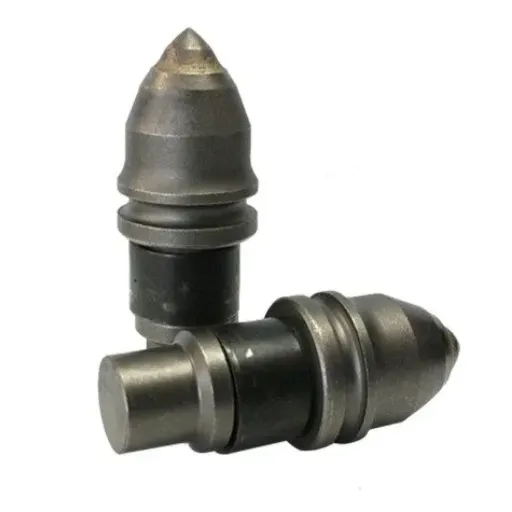
The process of choosing the correct bullet teeth should take into account the environment in which operations will be performed, as well as the properties of the material to be worked on. For hard or abrasive materials, carbide teeth should be used because of their strength and high resistance to wear. On the other hand, softer or less abrasive soils can perform with steel teeth, which will provide a compromise between efficiency and economy. The teeth themselves must be compatible with the auger’s design so that they fit properly and are aligned correctly under operation and, therefore, are not a source of operational inefficiency. Always look at the manufacturer’s specifications and recommendations; doing this will help make sure the teeth will perform optimally and last a long time. Periodic maintenance and replacements are also factors in maintaining consistently good performance by the teeth selected.
Factors to Consider When Selecting Bullet Teeth
When buying bullet teeth, one consideration is the material used to make them, whereby higher-grade materials have more durability and less susceptibility to wear. The compatibility of the bullet teeth with your machinery should be investigated to secure a proper fit that may otherwise cause operational disruptions. Consideration should be given to the design of the teeth, including the shape and geometry of the tip, as this has a direct bearing on its intended application, with different shapes suited to specific tasks like the cutting of rocks or soils. Pay attention to the hardness and toughness of the teeth; these qualities influence performance under extreme conditions.
Selection Checklist
- Material quality and grade
- Machinery compatibility
- Tooth design and geometry
- Hardness and toughness ratings
- Manufacturer specifications
- Total cost of ownership (initial cost + durability)
- Supplier reputation and reviews
The manufacturer’s specifications should also be reviewed to ensure that the teeth meet the application’s required performance standards. The cost consideration should not be based on the initial cost alone, but should incorporate the teeth’s durability and turnover rate. Finally, fairly reputable suppliers provide authentic customer reviews to back up reliability and quality assurance.
Recommended Suppliers for Bullet Teeth
Kennametal
Undoubtedly, Kennametal is one of the most recognized industry suppliers, providing a greater variety of bullet teeth of pronounced qualities, depending on the required performance in specific cutting or drilling applications. These products are made of fine carbide material so as to give durability, wear resistance, and long life. The company provides full product specifications and technical support to assist with proper selection and application. Customers have always emphasized the reliability and precision of their manufacturing methods.
Sandvik
Sandvik offers premium-grade bullet teeth designed in accordance with extreme operating conditions. The name Sandvik stands synonymous with innovative engineering, employing cutting-edge technology to manufacture teeth possessing high-grade strength and wear capabilities. The products of the firm are directed toward the mining, construction, and tunneling sectors. The supplier prides itself on environmental sustainability and offers after-sales support covering fault finding and maintenance of its products.
Betek
Betek specializes in producing wear parts such as bullet teeth by combining high-grade alloy material with sophisticated brazing. Their bullet teeth are tailored for high resistance to wear and impact, thereby minimizing downtime and maintenance costs. Their extensive catalog covers many application areas, and they use precision engineering to give consistent results. They, therefore, have a very well-established global distribution channel and are considered reliable in customer service and product delivery on time.
These suppliers offer bullet teeth that pull through with different strengths; hence, deciding on one is very much dependent on the specific requirements for your project in terms of material type, operational conditions, and budget.
Common Machinery Used with Bullet Teeth
The bullet teeth constitute very important components of different heavy-duty machinery across industries. The common types of machinery utilizing bullet teeth comprise:
- Trenchers – Used extensively in construction and utility installation, trenchers depend on bullet teeth to cut through tough ground conditions, including clay and rock, and hard soil.
- Road Milling Machines – Used for milling processes of asphalt and concrete, bullet teeth ensure the proper and uniform milling required for road repairs and resurfacing works.
- Mining and Drilling Equipment – Bullet teeth are offered to mining and drilling tools such as continuous miners and drilling rigs, where the resistance and performance factors come into play while handling abrasive rock formations and sediment.
- Forestry Mulchers – Forestry machinery frequently utilizes bullet teeth to shred trees, stumps, and brush into mulch, so they are very efficient in land clearing with a motor.
Depending on the type of machine, requirements may vary, since the bullet teeth must be tailored to suit particular materials and operating conditions, thus enhancing the working efficiency of each equipment and providing an extended working life.
Maintenance and Wear Parts
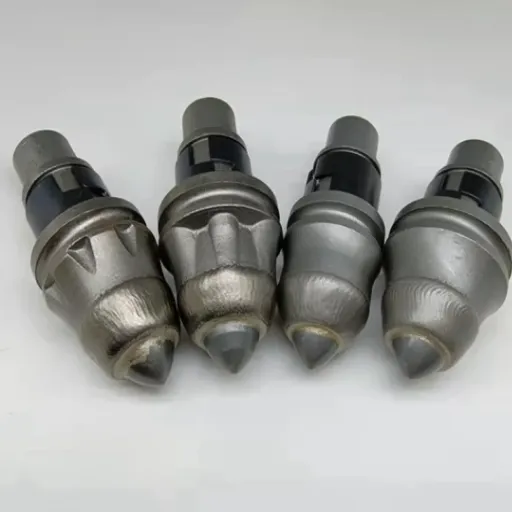
Proper maintenance of bullet teeth can be considered a necessity for optimal machinery performance and longevity. Once in regular use, overt inspections are carried out to detect any wear or cracks that compromise the blades’ effectiveness. When the cutting edges of the bullet teeth are dulled or diminished, the bullet teeth should be replaced, as the continued use of worn teeth increases strain on the machinery and decreases efficiency. Cleaning parts to wash out dust or dirt and ensuring their tight attachment stand as prime considerations to avoid operational problems. Always adhere to the manufacturer’s instructions when replacing or maintaining wear parts. Following these instructions ensures that the wear parts will fit and work properly.
Best Practices for Maintaining Bullet Teeth
Essential Maintenance Practices
Regular Inspection
Periodic Inspection, from time to time, should include a scrutiny for signs of wear, damage, or misalignment. Cracks and chips, or very pronounced wear at the cutting edges, will deteriorate the cutting capacity of the basis and will put a strain on the equipment.
Timely Replacement
Replace bullet teeth as soon as they are found to be dull or have any structural integrity issues. Such worn-out teeth impair performance, cause power wastage, and may offer excessive wear to other parts of the machine.
Cleaning: Proper Maintenance
Cleaning time! Get rid of any bits of soil and tiny rock elements accumulated inside so that their excessive friction and overheating do not exacerbate wear on the parts. Clean parts weigh less on themselves and run longer.
Attachment
Clamp the teeth properly, then check from time to time that vibrations and impacts have not loosened them. During installation, always use approved tools, and never compromise on alignment or safety.
Use OEM or Compatible Parts
Ensure the use of parts directly from the OEM or at least said as compatible. This way, it fits perfectly with the machine and meets all the specifications regarding material quality and operational efficiency.
Lubrication and Cooling
Keep enough level of lubricant to avoid friction between components. And, control overheating during operations to prevent material fatigue or deformation.
Following Manufacturer’s Instructions
Maintenance and replacement schedules of the manufacturer must be adhered to. These suggest specific intervals and procedures regarding maximizing the use of bullet teeth for their full performance and longevity.
Doing so will definitely improve the efficiency of the operations and reduce downtime and maintenance costs.
Identifying Wear Parts in Bullet Teeth
To identify wear in bullet teeth, I focus on several key components such as the carbide tip and the steel body. I observe signs of rounding, chipping, or cracking in the carbide tip, as these are all wear factors that decrease cutting efficiency. On the steel body, I check for deformation, excessive abrasion, or corrosion, all of which could affect its strength. By regularly inspecting these points, I am able to assess the wear pattern and decide well in time for replacements.
Replacement Solutions for Worn Bullet Teeth
Ensuring the timely replacement of worn bullet teeth remains crucial to maintaining optimum performance and minimizing downtime, and this is especially so in cases where the machinery is trenchers, road milling equipment, or forestry mulchers. The following are the primary replacement solutions considered:
Manufacturer-Specific Replacement Teeth
Teeth from the original equipment manufacturer (OEM) are ensured to fit properly and work with the machine. OEMs are made to exact specifications so that the tool offers a reliable cutting performance and has a long tool life.
Aftermarket Options
These supplies from aftermarket suppliers can provide less costly alternatives to OEM parts. Often, they make replacement teeth using high-quality carbide tips and qualified steel bodies for different applications. However, care must be taken to check the compatibility and ratings of the suppliers.
Interchangeable Wear Parts
Some manufacturers produce systems with interchangeable components so that one can quickly and easily replace only the damaged parts (such as carbide tips) rather than the whole unit. Such an approach will save one money during replacements and will minimize waste.
Preventive Maintenance Upgrades
Upgraded bullet teeth made of wear-resistant material or coated for greater wear resistance can be provided for longer life. They are best suited in situations that involve abrasive conditions or high-impact work since they not only lengthen service life but also reduce wear.
Important Note: Selecting a replacement solution needs to be tailored to operational needs, type of machine, and the working environment so that it can actually lead to increased productivity and the life of the equipment.
Reference Sources
“PREOPERATIVE MANAGEMENT OF MAXILLOFACIAL WAR INJURIES”
“Silver Diamine Fluoride: Game Changer in Dental Public Health: A Review”
“Nanomaterials and nanorobotics in dentistry: A review”
Frequently Asked Questions (FAQs)
What are bullet teeth used for in construction machinery?
Bullet teeth are intricately working wear parts being adopted in construction machinery, especially for augers and drills. These teeth have to penetrate hard materials and deliver high performance for tasks like foundation drilling and road milling. High-grade bullet teeth are recommended, for they will work for many applications and last forever.
How do carbide bullet teeth improve drilling performance?
Carbide bullet teeth achieve the improvement in drilling by premium hardness and abrasion resistance. Since these teeth are made of tungsten carbide, they could sustain the harshness of the penetration through hard rock or soil that would otherwise compromise the speed and efficacy of drilling. High-quality carbide teeth are key to the best results in construction and excavation bits.
What is the significance of the round shank design in bullet teeth?
The presence of a round shank for the bullet teeth contributes to ease of attachment to various drilling equipment. It therefore offers a good fit, while the round shank facilitates usage with different auger teeth, drill bits, etc. This enhances the capability of construction machinery. Such a firm connection is important for operation and safety during actual working conditions.
Can I recognize bullet teeth of high quality for my machinery?
Some of the features one could look into when buying bullet teeth include the material, design, and reputation of the manufacturer. Bullet teeth of good quality are made of tungsten carbide chemically, and so they withstand heavy wear and tear. Good suppliers will also inform you on how bullet teeth perform in different conditions, for example, how well they can penetrate hard materials.
What are the functions of auger teeth in foundation drilling?
Auger teeth form an important drilling element in foundation drilling processes in that they cut through soil or rock while making holes for foundations. High-performance auger teeth, and especially those of bullet design, would have been able to penetrate hard substrates very efficiently, which is perfect for construction processes. Hence, their efficiency determines the time required to drill and the quality of the working process.
Can I use b47k22h bullet teeth on all machinery?
The b47k22h bullet teeth are designed for specific kinds of machinery and applications. Being extremely able in certain conditions does not guarantee the compatibility of the b47k22h teeth with your equipment. Be sure to check the manufacturer’s specifications or trailing suppliers about the possibility that these teeth go effectively with your construction machinery.
What are the advantages of tungsten carbide bullet teeth?
Tooth actuation by tungsten carbide offers many advantages: harder wear, superior cutting, and less wear and abrasion with time. Heads work best in cases where hard penetration is required in construction and excavation. With better options available, operators will prolong service life and reduce replacement costs.
Maintaining bullet teeth for optimal usage
Maintenance of bullet teeth involves routine inspection and timely replacements to maximize the efficiency and performance of the machine. The operator should scrutinize these secondary components for wear–chipping or excessive dulling–and immediately replace them if found damaged. Furthermore, keeping these components clean after finishing work ensures that no build-up will obstruct the practicality of the equipment. Timely maintenance will prolong the life span of these much-needed parts for construction equipment.


